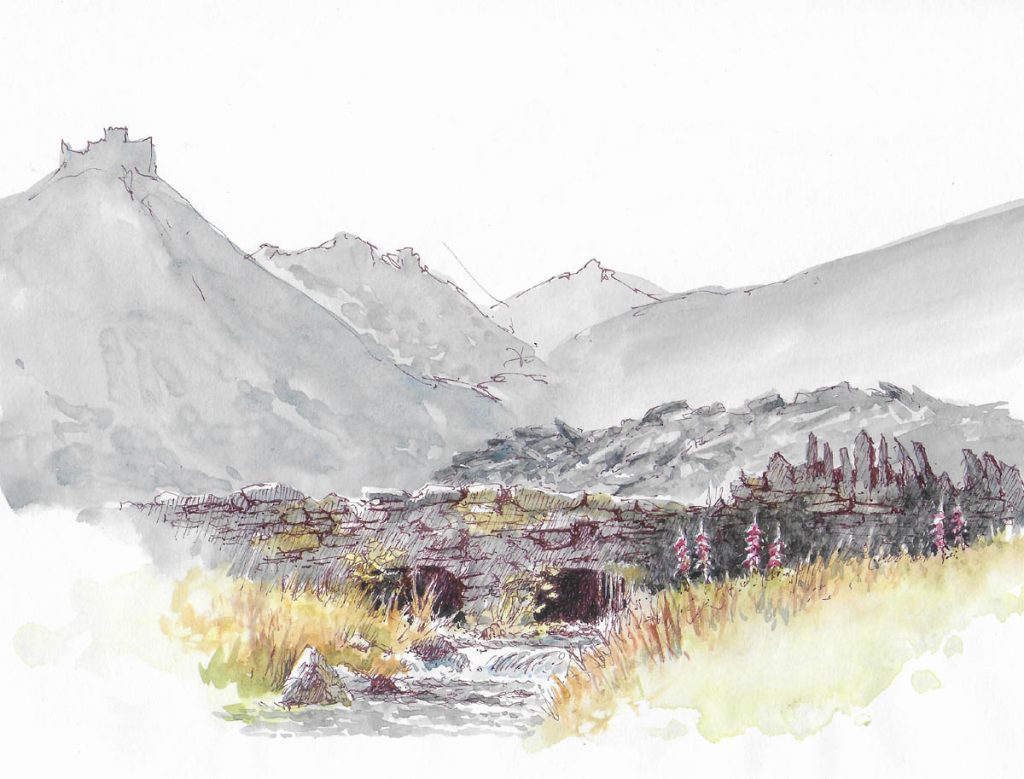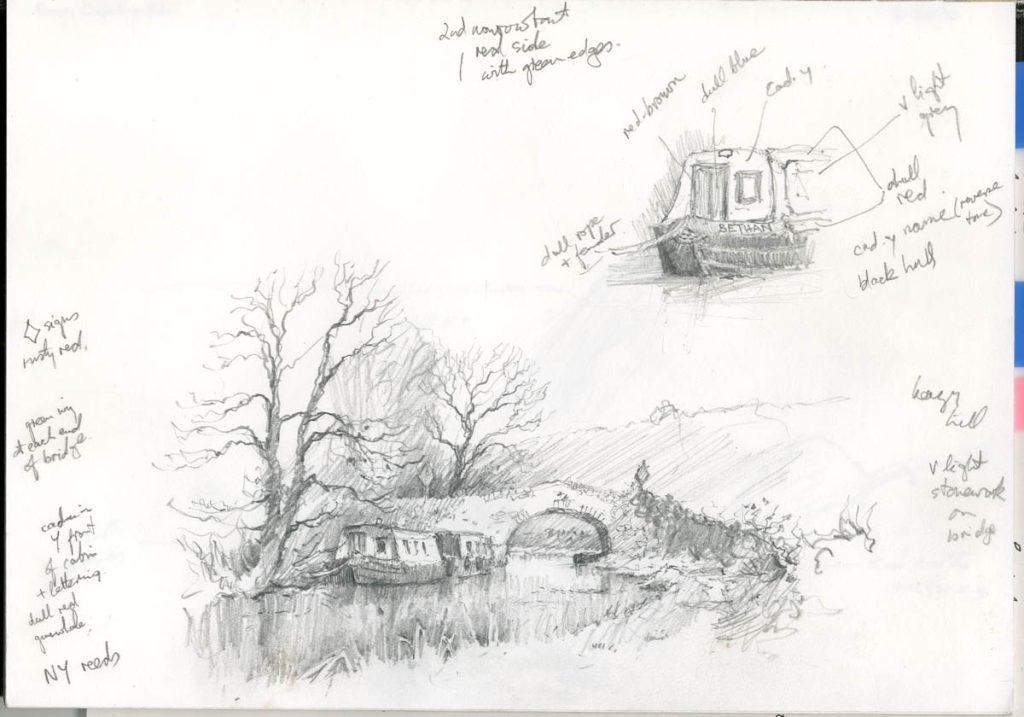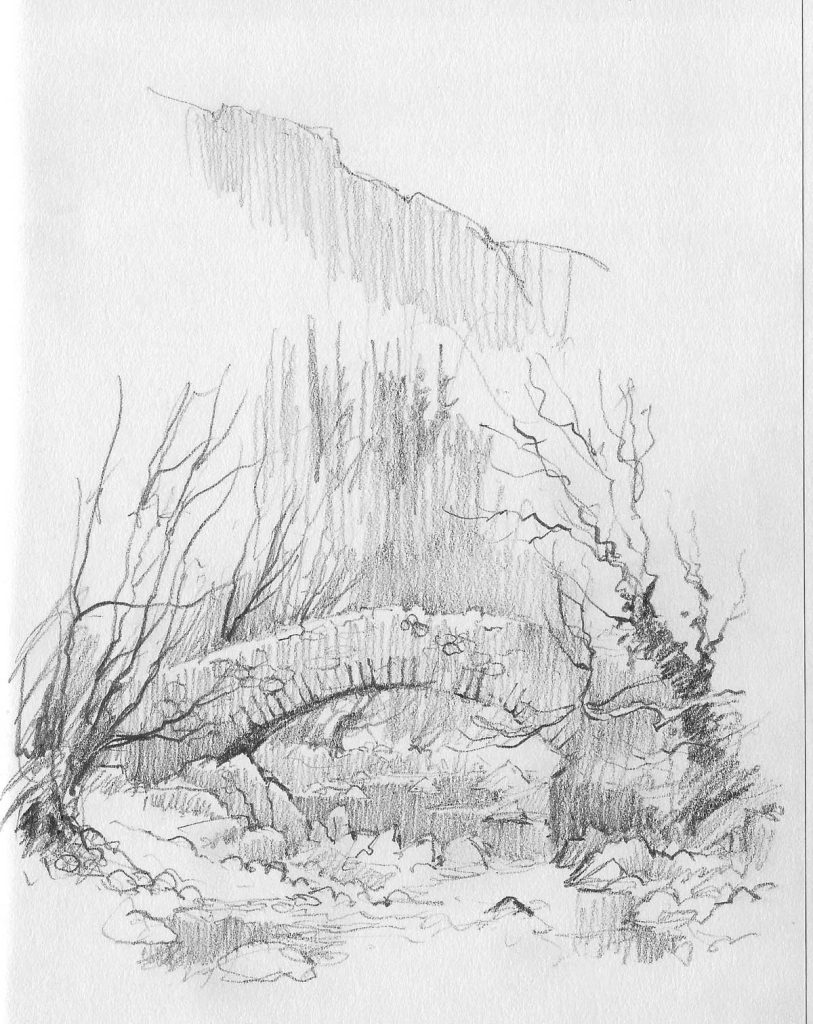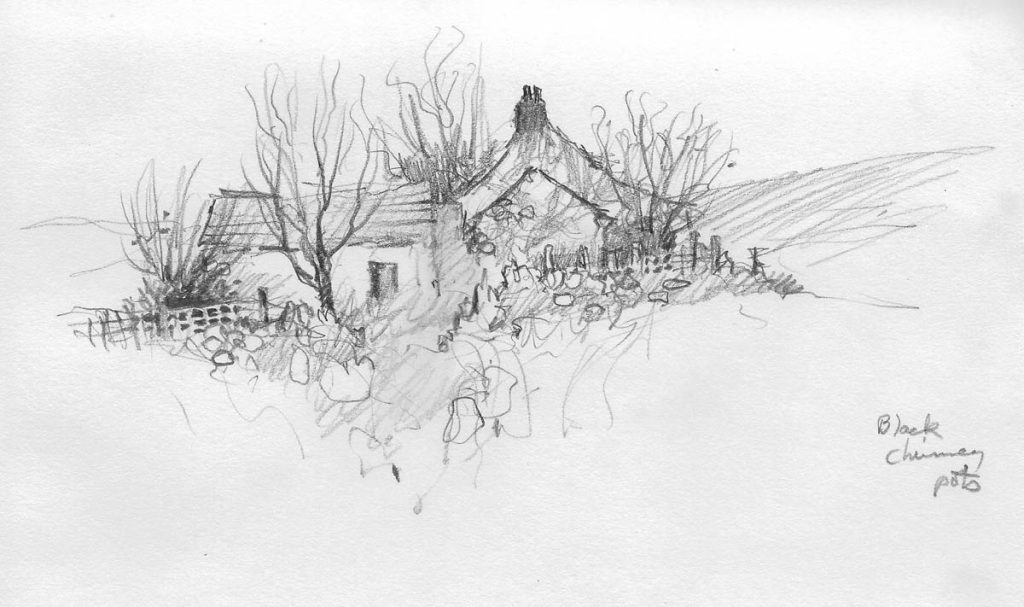This is a time of year when many of us go off on holiday with friends, family or on guided tours with others, hoping to snatch a sketch or painting here and there, only to find that we are pressed to move on quickly to the next highlight of the trip. So we don’t get our sketch, just a quick photo which often falls short of our needs. How do we respond to these pressures?
Having to cope with some furious sketching moments when an Arctic storm is almost upon me, or something really nasty has just emerged from out of the jungle to threaten my very existence, I’ve developed rapid-sketching methods over the years. Firstly, make sure you prepare well. Have your gear ready to hand: fiddling with the opening of pack buckles and searching for the right pencil in a deep container takes precious time, so apart from my usual painting kit kept in a rucsack I ensure I have sharpened pencil stubs in my pockets and an A5 sketchbook in another, all ready to grab quickly and start working. Also included in this pocket kit are water-soluble pencils and an Aquash brush containing its own water supply.

This is a pencil sketch in an A5 hardback sketchbook I did in Austria a couple of weeks ago. It shows the Durlasbodenstausee in the Eastern Tyrol, a magnificent scene, but I only had around 5 minutes to render it. I began with a few photographs, not just of the general scene, but also a close-up of the Reichenspitze, the handsome reigning peak. However, as in many cases I needed to ensure I recorded those parts of the scene that would be less clear in a photograph, and also bring in one or two conifers into more prominent positions than where they stood in reality.
To work quickly within such a ridiculously short time-frame I used my pencil-stubs, ignored the larger sketchbooks in my rucsack and worked over a double-page spread on the A5 book. I briefly indicated the darker tones on the sky only in a small area on the left where it abuts the snow slopes of the Gabler running down on the left, and also put in small patches of dark tones where there was darker ground than the glacier and also where the dark conifers stood. I then darkened the lake in places to indicate the water was darker than the shorelines. Finally I introduced the foreground trees on the left, but only with 3 or 4 pencil lines.
That evening in the hotel I added tone to the mountain peaks and sky, also darkening the top of the sky to include the stormy clouds, then worked on the slopes and conifers, all within the rapid outlines I had created on the spot. I had made a note of one or two of the more important colours, such as the shorelines, but for a painting I often impose my own colour regime anyway. I am wary of doing too much to a sketch, as it’s best to retain the spontaneity of the original, but when working under these conditions you do need to try to produce a reasonable response to the scene while it is still fresh in your mind.
Note that you can buy pencil extenders and also point protectors for those stubs. I always have a few of these in my pockets, even in a restaurant or cafe – you never know when you might need them!




